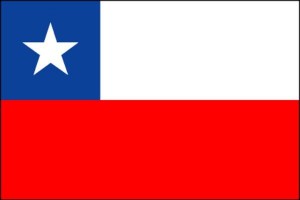 Chile Population 2013
Chile Population 2013
The current population of the Republic of Chile is estimated to be about 17.4 million people, which is an increase of about 0.75% from the last record of the population. The population has consistently been less than the population of Peru. However, since the latter half of the 20th century, the difference in population has become greater and greater. Based on the total land area and the population of the country, the population density is 59 people per square mile.
Demographics of Chile
The majority of the population identifies as either white or mestizo, which is a mixed ethnic group. However, the majority of the population seems to be of Caucasian origin. There is also an Amerindian population that makes up the country. The main language of the Republic of Chile is Spanish; however, the Chilean dialect of Spanish is a slightly different variation of the standard Spanish language. There are also some indigenous languages throughout the country.
Religion in Chile
The majority of the population identifies as members of the Roman Catholic Church. In fact, 89% of the population is considered to be Roman Catholic. The other 11% of the population identifies as some denomination of Protestantism. Also, there is a very small Jewish population in the country.
Sports in Chile
The three major sports in the Republic of Chile are football (American soccer), tennis, and traditional rodeo. There are even some indigenous sports, which all originate from a sport called “palin”, which is similar to hockey. Chile was also the only Latin American country at the first Olympic Games in 1896. Sports are hardly sponsored in Chile. Therefore there are only a few public sport centers, while private sport clubs are often exclusive and very expensive. The national sport is soccer, every weekend you will see people playing on any suitable field.
Food in Chile
Dishes in Chile frequently consist of seafood and high-end red wine. It is nothing like Mexican food, which frequently uses the chili pepper. Its dishes combine influences from both Europe and its indigenous populations. The country also makes a lot of different types of beef dishes. Traditional Chilean food gets its diverse flavors from the diversity in the products that are naturally available due to the varying landscape. But naturally people from different regions also have different eating habits. Then you have the influences of various cultures with the European, Native American and Spanish culture being foremost in exerting their sense of taste.
Visit Chile
Historical Population of Chile
The population of the Republic of Chile has continually increased over the last half a century. However, there have been times throughout this time where the population slowed its increase down and sped its increase up. Over the last few decades, the population has seemed to slow down its increase.
| Year | Population (millions) |
| 1960 | 7.652 |
| 1965 | 8.656 |
| 1970 | 9.578 |
| 1975 | 10.42 |
| 1980 | 11.18 |
| 1985 | 12.11 |
| 1990 | 13.19 |
| 1995 | 14.41 |
| 2000 | 15.42 |
| 2005 | 16.3 |
| 2010 | 17.11 |
| 2011 | 17.27 |
Projected Population of Chile
The population of the Republic of Chile is expected to continue its trend of population increasing up until 2045. Then, the population is expected to decrease. The birth rates are expected to decrease from about 14 births per 1000 people to about 10.2 births per 1000 people. However, the death rates are expected to increase from about 6.3 deaths per 1000 people to about 11.4 deaths per 1000 people.
| Year | Population (Millions) | Percent Increase |
| 2015 | 17.816 | 2.4% |
| 2020 | 18.448 | 3.5% |
| 2025 | 18.970 | 2.8% |
| 2030 | 19.360 | 2.1% |
| 2035 | 19.613 | 1.3% |
| 2040 | 19.726 | 0.58% |
| 2045 | 19.719 | -0.04% |
| 2050 | 19.639 | -0.41% |
Other Resources
Lear more about Chile population statistics in 2013 here.


